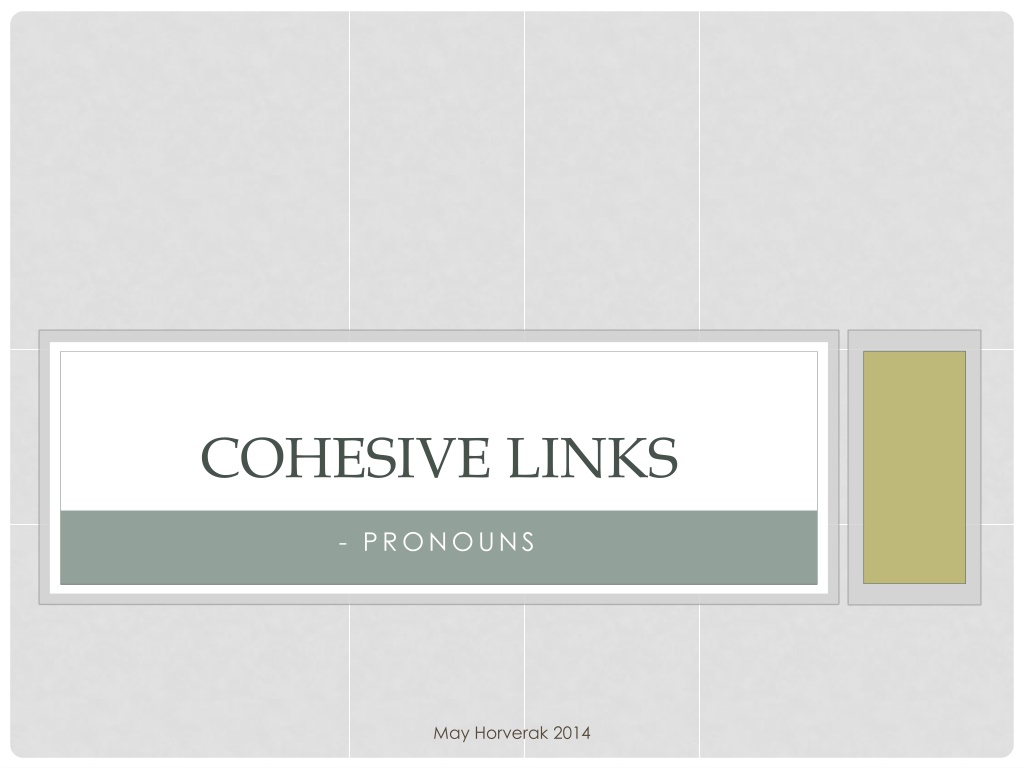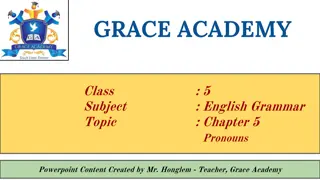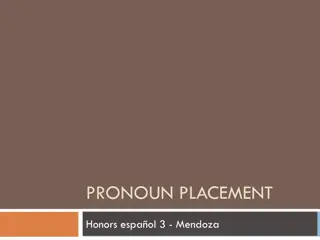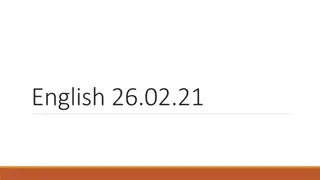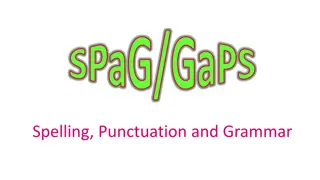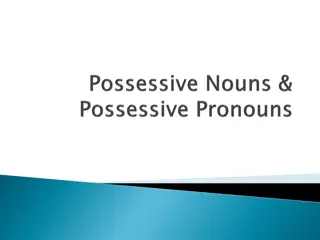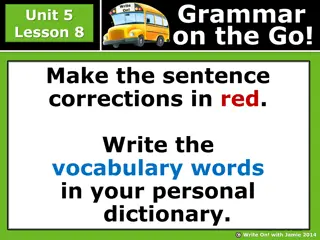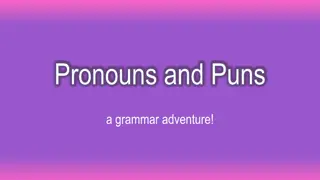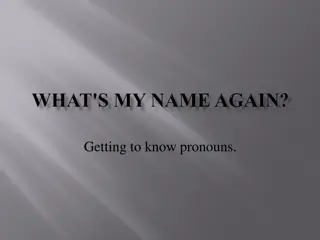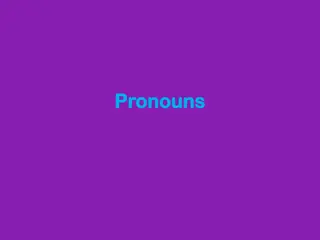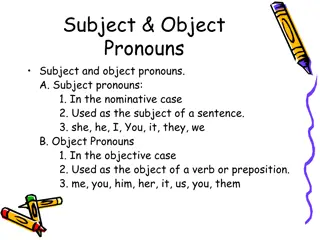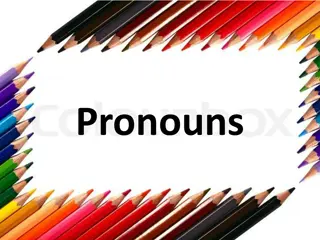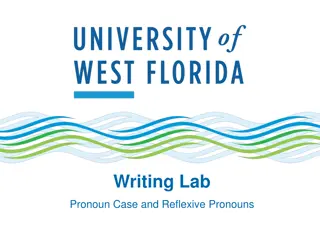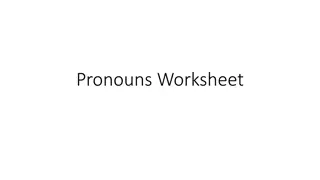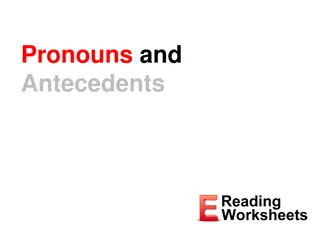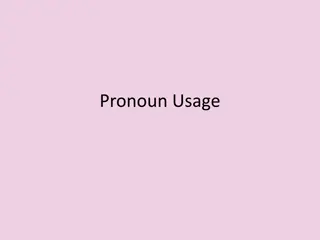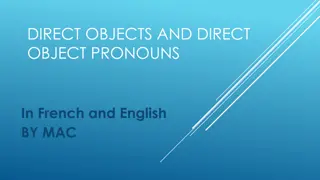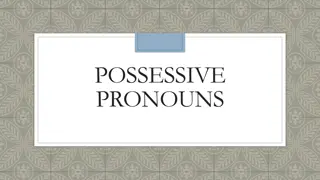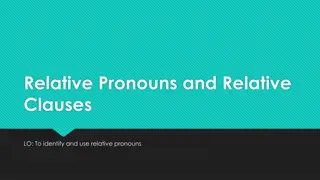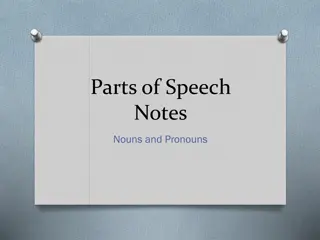Understanding Pronouns in English Grammar
Explore the role of pronouns in English grammar through examples and explanations of different types like demonstrative, relative, and personal pronouns. Learn how pronouns replace nouns and refer to concepts within sentences, enhancing clarity and flow in communication.
Download Presentation

Please find below an Image/Link to download the presentation.
The content on the website is provided AS IS for your information and personal use only. It may not be sold, licensed, or shared on other websites without obtaining consent from the author. Download presentation by click this link. If you encounter any issues during the download, it is possible that the publisher has removed the file from their server.
E N D
Presentation Transcript
COHESIVE LINKS - PRONOUNS May Horverak 2014
PRONOUNS Schoolhouse Rock video about pronouns: https://www.youtube.com/watch?v=14M5ayto61E Pronouns = Function words replacing nouns or referring to sentences/parts of sentences (substantiv) Tupac wrote a song about life in the ghetto. He wrote about a girl named Brenda. It is about a girl named Brenda. What does he refer to, and what does it refer to In topic sentences, use the full reference, not a pronoun (like here, Tupac ) May Horverak 2014
DEMONSTRATIVE PRONOUNS Demonstrates what is referred to, something close or something more distant Close One This More than one These Distant That Those This song is about Tupac writes about a girl that ends her life in the ghetto. This shows that life may not be fair. Tupac sings about the struggles of life. Obama talks about what Americans believe in. These perspectives may be said to contradict each other. (Used as a determiner in front of a noun) Obama s speech is about a need to progress and develop. That/this may give some hope about the future. Exercise: Write 5 similar examples on the same topic. May Horverak 2014
RELATIVE PRONOUNS Who: used about people; I like the woman who fixes my hair. Which: used about things/animals; I love animals which have soft fur. That: about people and things, (only in defining relative clauses); I like books that are long. May Horverak 2014
RELATIVE CLAUSES Defining: the relative clause is necessary to identify somebody/something (no commas) The man who stole the car was arrested yesterday. The first book that Dickens wrote is not his best book. Non-defining: the relative clause adds extra information, but is not necessary to identify who/what we talk about (use comma before and after the relative clause) John, who stole the car, was arrested yesterday. Oliver Twist, which was written by Dickens, is a very good book. May Horverak 2014
EXERCISES Identify the relative pronouns in Obama s speech What do the relative pronouns refer to? Some useful advice: if you have the digital version of the text, press Control + B to get up the navigation tool. Type who and press enter, then type which and press enter. Write 10 sentences about American values and social issues, using both who and which May Horverak 2014
